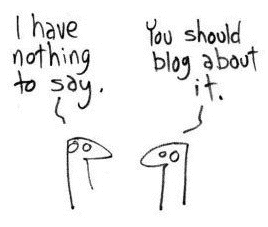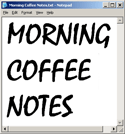
|
|||||||||||||||||||||||||||||||||||||||||||||||||||||
|
So here's a list of things, off the top of my head, that made the Mac radically different from any other computer, 25 years ago, from my point of view. 1. Guy Kawasaki. He's going to think I'm stroking him for saying this, but he got me my first look at the Mac, and my first Mac. Up until that point, there had been platform vendors who sought out developers, but they were of a previous generation, and didn't even remotely speak our language. Guy came to us, asked if we would develop for the Mac. Of course we would. We would have begged to, we would have barked like dogs to get a pre-release Mac, but he didn't make us. A proud developer who feels appreciated can make great software. One who has to swallow his pride to get the gig -- not so much. 2. Guy Kawasaki. Now he's really going to think I'm stroking him. Guy not only spoke our language but he spoke Apple's language. When we needed to get things done inside Apple, he managed them on our behalf. Believe me that was necessary, because while a small number of people inside Apple wanted developer support, the company was leaning toward the very big developers, Lotus, Microsoft and Software Publishing. Guy believed in the little guys, like my team, and it turned out he was right and they were wrong. The products that made the Mac were ones no one had heard of: Aldus Pagemaker, Adobe Photoshop, Quark XPress, Filemaker, BBEdit, Macromind Director, 4D, Think C and Pascal. Borland, Ashton-Tate and the other BigCo's, the ones that Apple management courted, with the exception of Microsoft, never shipped anything worthy of the Mac. (Microsoft shipped a number of good products for the Mac: Excel, MSIE/Mac, and eventually Word.)
3. A graphic display. Every pixel could be programmed by software. Before this, computers displayed grids of 24 lines with 80 characters each. That was considered a fancy computer! Many of us used computers that displayed 40 characters per line, all upper-case. And we thought they were pretty cooool!! 4. User interface guidelines. At first I thought they were retarded, then I became a believer. There were pros and cons. The pros: Every app interacted with the user the same way. If you learned how the menus worked in one Mac app you knew how they worked in all Mac apps. This is a principle I apply to this day. The cons: They were designed the way word prcessors work. If your app had a different model, as our outliners did, the UI guidelines forced an inconsistent conceptual model on the user. In the end this wasn't as big a problem as I thought it would be. 5. 32-bit linear address space. A very hidden feature, like Guy Kawasaki, users couldn't see this one, but it meant that the Macintosh could grow to support huge graphic apps like Photoshop and Quark without the horrible complexities of memory expansion on IBM-compatibles. I came to believe that this reason alone was the reason the Mac continued to sell through the early-mid 90s. Without this advantage, Apple's famous bozo-osity could have spelled the end. 6. The clipboard. There was a standardized way to move data between apps. I thought this was so important I asked for and got a meeting with Bill Gates in 1985 to urge him to add a clipboard to MS-DOS (it was totally possible). He said they were working on a new operating system that would have one, which turned out to be OS/2. Almost no one used it. The Mac was the first PC to have a clipboard, and the only one for a very long time. 7. It didn't look like a computer. This may be the hardest thing to describe, but I remember the first moment I saw a Mac. I was being led into a conference room on Bandley Drive for a demo and on the way to the room I saw a Mac on a table in another room and was struck. It was upright, where most computers were modular and sort of sloped. It was small. Most computers were white, it was beige. But it just looked strange but really interesting. (Kind of like the reactions I get to my netbook these days.) Marylene Delbourg-Delphis, the French entrepreneur who started Acius, says: "It looked like an appliance made for normal people." I'm leaving room here for other ideas as the come along, if they do. Feel free to add your own in the comments on this post. Thanks: gapingvoid. Update: What made the Mac different. |
"The protoblogger." - NY Times.
"The father of modern-day content distribution." - PC World.
One of BusinessWeek's 25 Most Influential People on the Web. "Helped popularize blogging, podcasting and RSS." - Time.
"The father of blogging and RSS." - BBC.
"RSS was born in 1997 out of the confluence of Dave Winer's 'Really Simple Syndication' technology, used to push out blog updates, and Netscape's 'Rich Site Summary', which allowed users to create custom Netscape home pages with regularly updated data flows." - Tim O'Reilly.
My most recent trivia on Twitter. On This Day In: 2008 2007 2006 2005 2004 2003 2002 2001 2000 1999 1998. |
||||||||||||||||||||||||||||||||||||||||||||||||||||
|
© Copyright 1997-2009 Dave Winer. Previous / Next |
|||||||||||||||||||||||||||||||||||||||||||||||||||||





